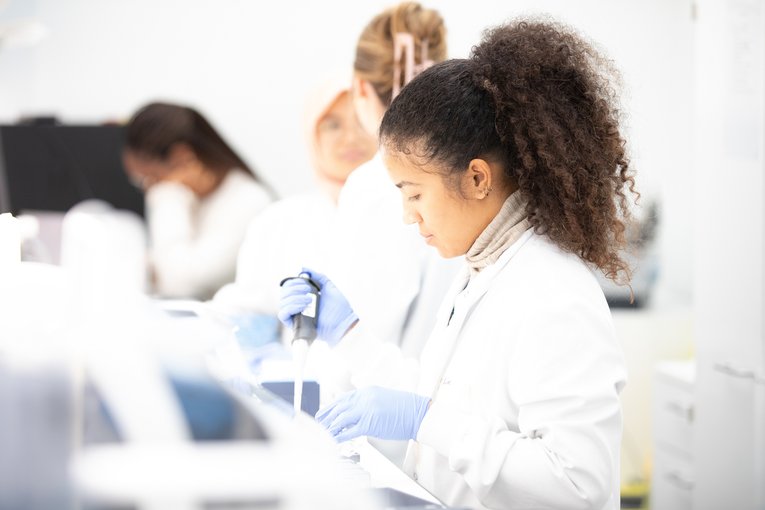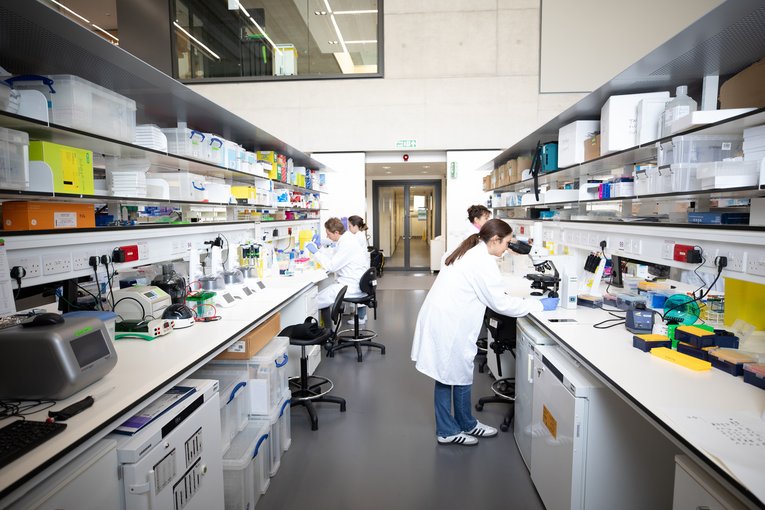
https://www.gosh.nhs.uk/our-research/our-research-infrastructure/nihr-great-ormond-street-hospital-brc/brc-news/low-myostatin-levels-linked-lack-success-anti-myostatin-drugs-muscle-wasting-conditions/
Low myostatin levels linked to lack of success of anti-myostatin drugs for muscle-wasting conditions
30 Nov 2017, 2:04 p.m.
Levels of myostatin, a protein that prevents muscle growth, could influence how well the body responds to anti-myostatin treatments for muscle-wasting conditions such as Duchenne Muscular Dystrophy (DMD). This breakthrough could help predict which patients will benefit from therapies that aim to increase muscle strength by blocking myostatin.Neuromuscular conditions, such as DMD and Becker Muscular Dystrophy (BMD), affect around 1 in 1000 people in the UK and can cause a range of debilitating symptoms including muscle shrinking and weakness. Eventually patients may need to use a wheelchair.
In the study, which was published in Nature Communications and supported by the National Institute for Health Research (NIHR) Great Ormond Street Hospital (GOSH) Biomedical Research Centre, the researchers aimed to understand why several recent clinical trials of drugs that block myostatin, a protein that is naturally produced by the skeletal muscle and normally inhibits muscle growth, have not been as successful as anticipated in treating patients with muscle wasting conditions.
The team found low levels of myostatin in samples of blood from 94 patients with muscle wasting conditions including DMD and Spinal Muscular Atrophy (SMA) and that patients with the most severe muscle wasting had the lowest levels of the protein. A low level of myostatin was also found in samples of muscle tissue, suggesting that myostatin levels may be naturally reduced in patients with the most severe muscle-wasting to counterbalance the wasting process. The researchers also looked at a mouse model of neuromuscular disease and found that sufficient levels of myostatin are crucial for anti-myostatin treatments to work effectively.
The researchers think that blocking myostatin using drugs may not be an efficient way to increase muscle mass in many patients with severe muscle wasting conditions because myostatin levels are already so low. However, these drugs could be useful for treating patients with less severe muscle wasting such as BMD or facioscapulohumeral muscular dystrophy (FSHD) or be used in conjunction with another treatment such as gene therapy.
Work using human tissue samples was supported by NIHR via the GOSH and UCLH BRCs and the NIHR Rare Disease Translational Research Consortium, and by the FSH Society (USA). Animal work was supported by AFM-Telethon (France) and Myotubular Trust (UK).

When it is OK to link our data?
A guide for researchers by children and young people containing key principles which reflect children’s and young people’s views about when it is ok to link their data for research.

NIHR launches £13.7m investment into brain tumour research
The National Institute for Health and Care Research (NIHR) has announced a £13.7 million investment that will support ground-breaking research to develop novel brain tumour treatments in the UK.

New consortium aims to help improve care for arthritis patients
A new UK-led research group, including Great Ormond Street Hospital and University College London, aims to improve the lives of children, young people and adults with arthritis by defining for the first time what being in ‘remission’ from arthritis truly

Update for patients and families on industrial action - December 2025
As you may be aware, some of our Resident Doctors will be taking part in planned industrial action from 7am on Wednesday 17 December to 7am on Monday 22 December.

